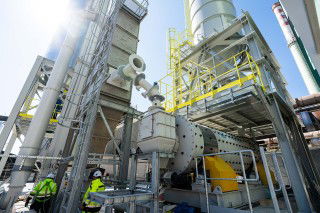This week the CCS+ initiative released its EU guide to an integrated carbon accounting infrastructure for the industrial carbon management market. The market for carbon capture and storage (CCS), carbon capture, utilisation and storage (CCUS), carbon capture and utilisation (CCU) and carbon dioxide removal (CDR) is developing and the accounting framework needs to be robust to ensure the best solutions will emerge from policies and investment.
The CCS+ initiative claims that the deployment of industrial carbon management projects is not currently on track to meet climate targets, either in the EU or globally. The organisation suggests that greater commitment is needed to both reduce and remove emissions. “The EU can help bridge the deployment gap in two ways: creating market incentives to drive long-term demand signals for industrial carbon management based emission removals, and broadening the market options for industrial carbon management based emission reductions,” reports the CCS+ initiative.
The EU provides an incentive in the compliance market for CCS-based emissions reductions. However, the CCS+ initiative advocates the EU's adoption of emissions reductions in the voluntary market by establishing a harmonised accounting methodology framework. While such a framework is under development for emission removals, it would be prudent to create a similar framework for CCS and CCUS emission reductions, according to CCS+ initiative. It argues that the Monitoring and Reporting Regulation (MRR) Directive and the Directive on the geological storage of CO2 (CCS Directive) offer the guidelines for quantifying emissions, and could be built upon to ensure efficiency and consistency.
The new guide offers an outlook on the methodology elements necessary to complement current EU regulations for the certification of emission reductions. The recommendations include providing clear definitions of ‘carbon removals’, ‘carbon removal activities’ and ‘verification of permanence'. It asks whether to create new carbon accounting methodologies setting out the requirements under which carbon removals should be eligible for certification. It also looks to definine standards of reliability, transparency, accounting and independent auditing as well as setting guidelines for monitoring the permanent storage of CO2 in the Geosphere and Technosphere. In addition, full traceability of carbon removal and reporting activities of certification schemes would be advantageous to obtain data for the EU's net zero emissions objectives from the member states.
The EU's position
The EU has already set out its Carbon Removal Certification Framework (CRCF) to set the rules for companies and policymakers to monitor, report and verify CO2 being removed from the atmosphere. It intends to drive forward technological and natural carbon removals, and prevent greenwashing through robust standards and certification, as we reported on last week.
Prioritising high-value CCS
Discussion has also been ignited around the role of CCS as the EU falls behind its net-zero targets. Critics such as Greenpeace, denounce carbon capture as "a costly distraction that enables the continued use of fossil fuels despite the urgency of the climate crisis.” It is argued that the principle of the polluter must pay is one that the cement sector cannot expect to evade.
A CCS ladder proposed by the think tank E3G could be a way forward. The ladder would rank CCS for industrial activities according to their mitigation potential. Carbon capture for clinker production, for example, would be ranked above CCS applied to a gas-fired steel blastfurnace. The idea is that stakeholders can prioritise high-value CCS applications.
